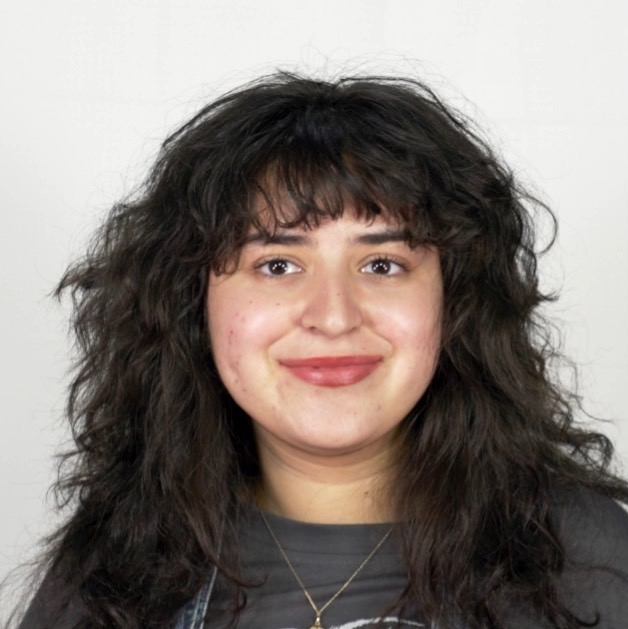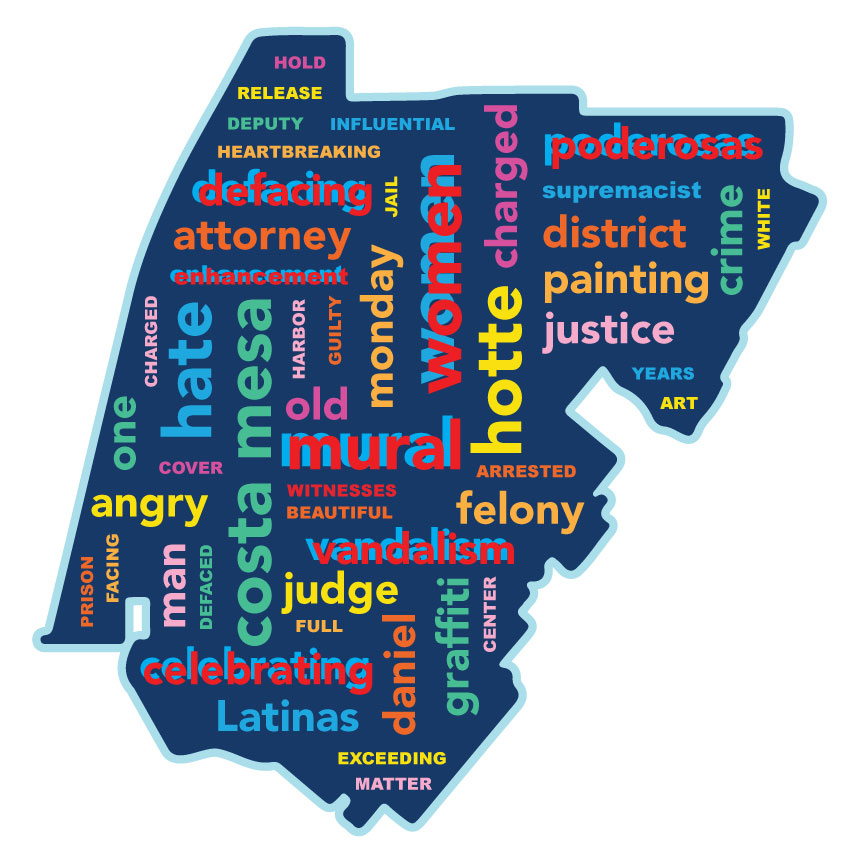Mayah Kabbara

Mayah responds:
What is something people might not know about your when they first meet you?
A fact about me you might not expect from a first impression is that I have a cat. Many people peg me as a dog person; I have been told it’s because I can be bubbly. But like a cat, that side of me only comes out around my favorite people.
What made you select this particular article?
I selected this article because the hate crime was centered around Latina art. Street art appears in various places, each carrying different connotations. In suburbia, vandalism art is a symbol of teenage angst. Art and artists form a sect in major cities: the art district. In war-torn areas, it is a symbol of activism. Like any other art, street art guides our feelings and thoughts to understand the artists’ expression. Art is a way for people to ask you to listen, to hear them through imagery. These Latina women were asking Costa Mesa residents to understand their experiences as Latina women; to showcase that despite years of racism and xenophobia, they are proud of who they are.
What might be missing from the story that would be important for readers to know?
Something for readers to know that is missing from the story includes the man who committed the criminal act, Daniel Hotte, coming all the way from another city into Costa Mesa just to deface the mural. From this, we can assume he knew of the mural’s presence and significance, and the vandalism was premeditated.
Share a little bit about your empathy towards the victim or victims family.
As a Latina woman bred by generations of beautifully strong Latinas, I empathize wholeheartedly with the victims of the vandalism. No one’s art should be humiliated; to humiliate these women in a racist way, writing words from a practicing hate gang adds salt to the wound. How can you hate a group of people so much that you go out of your way to deface a creation? A tangible piece of a group of women’s souls translated into visuals is personal and should be respected.

